Portrait of Philip the Younger
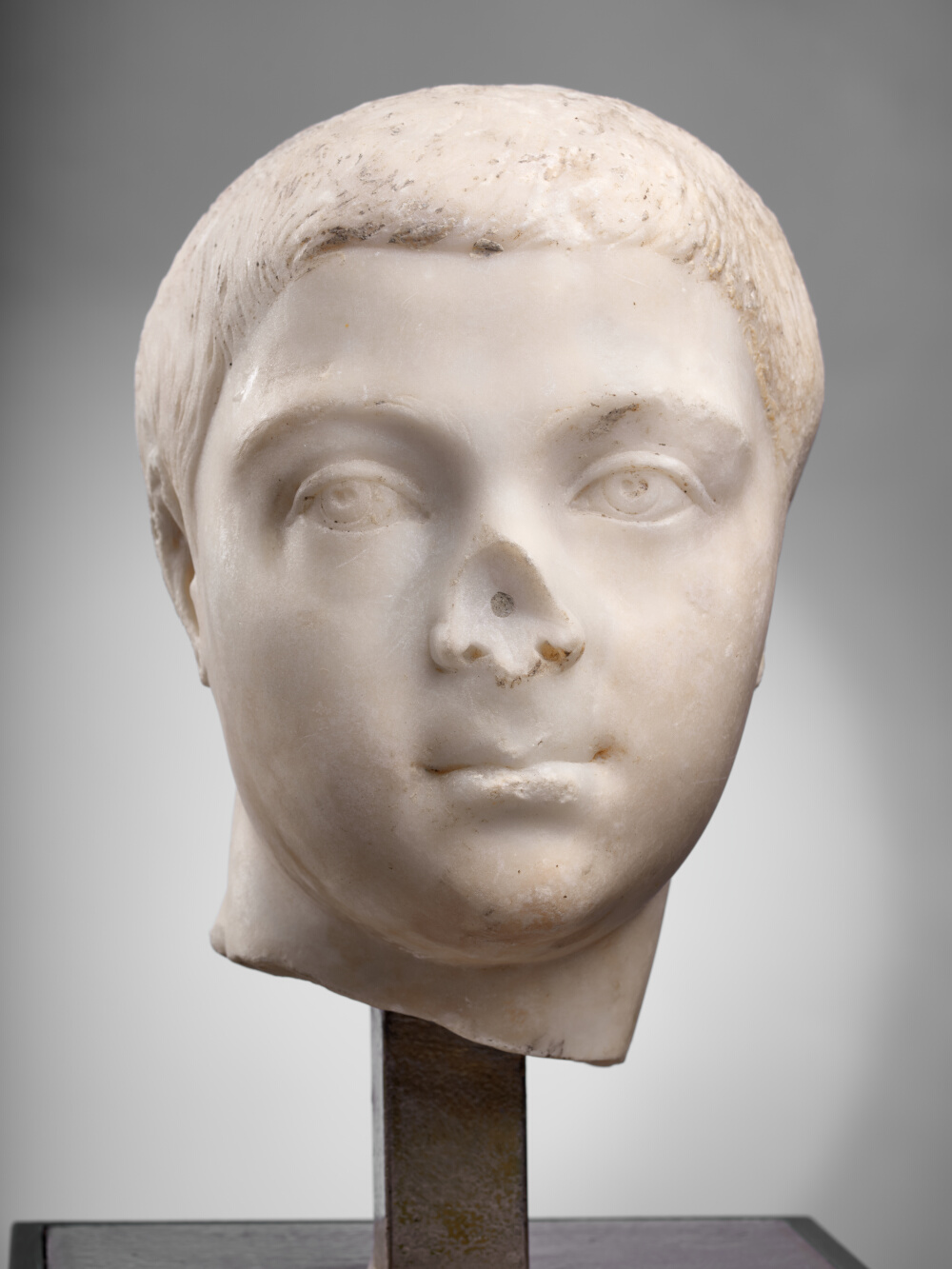
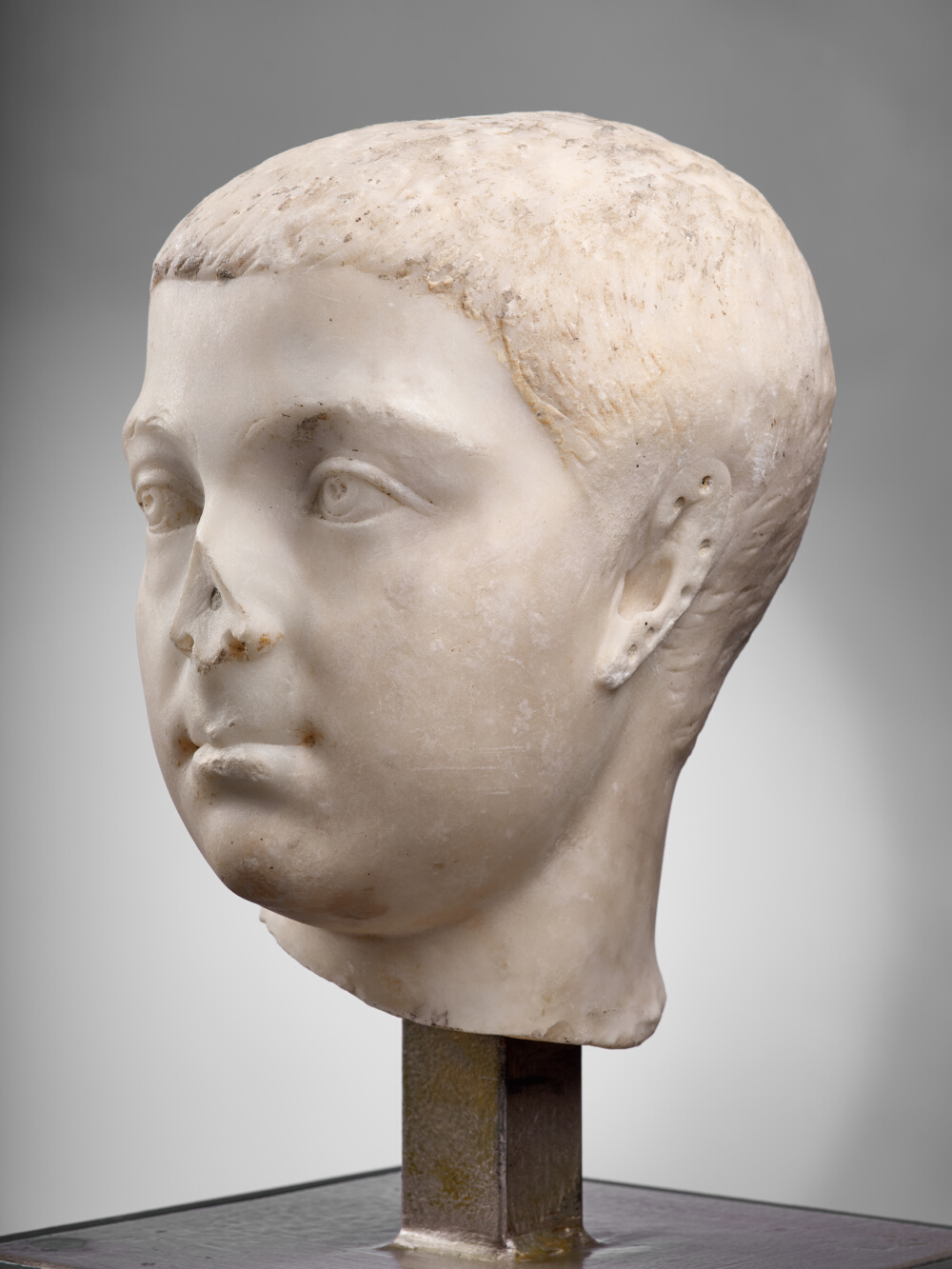
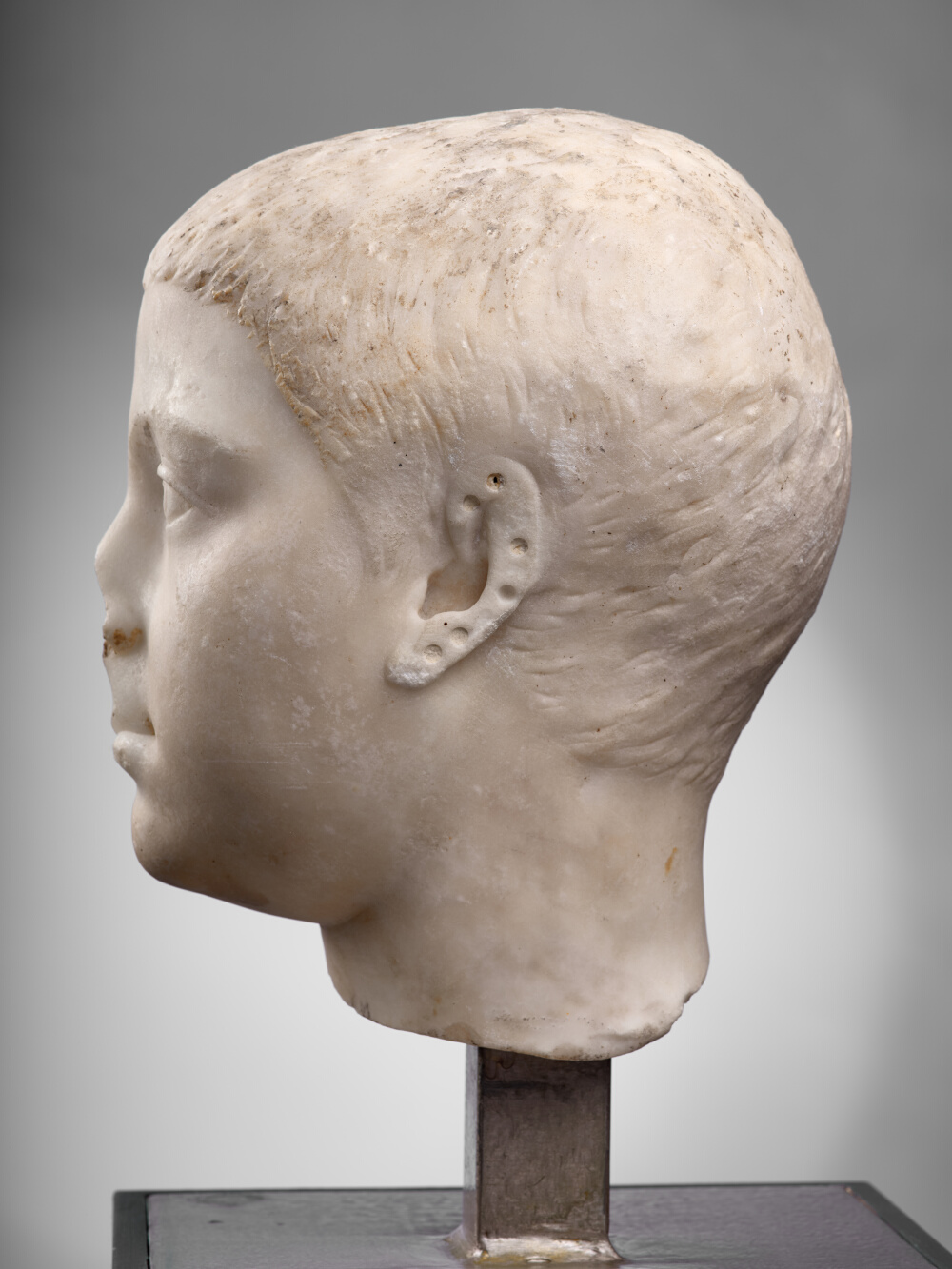
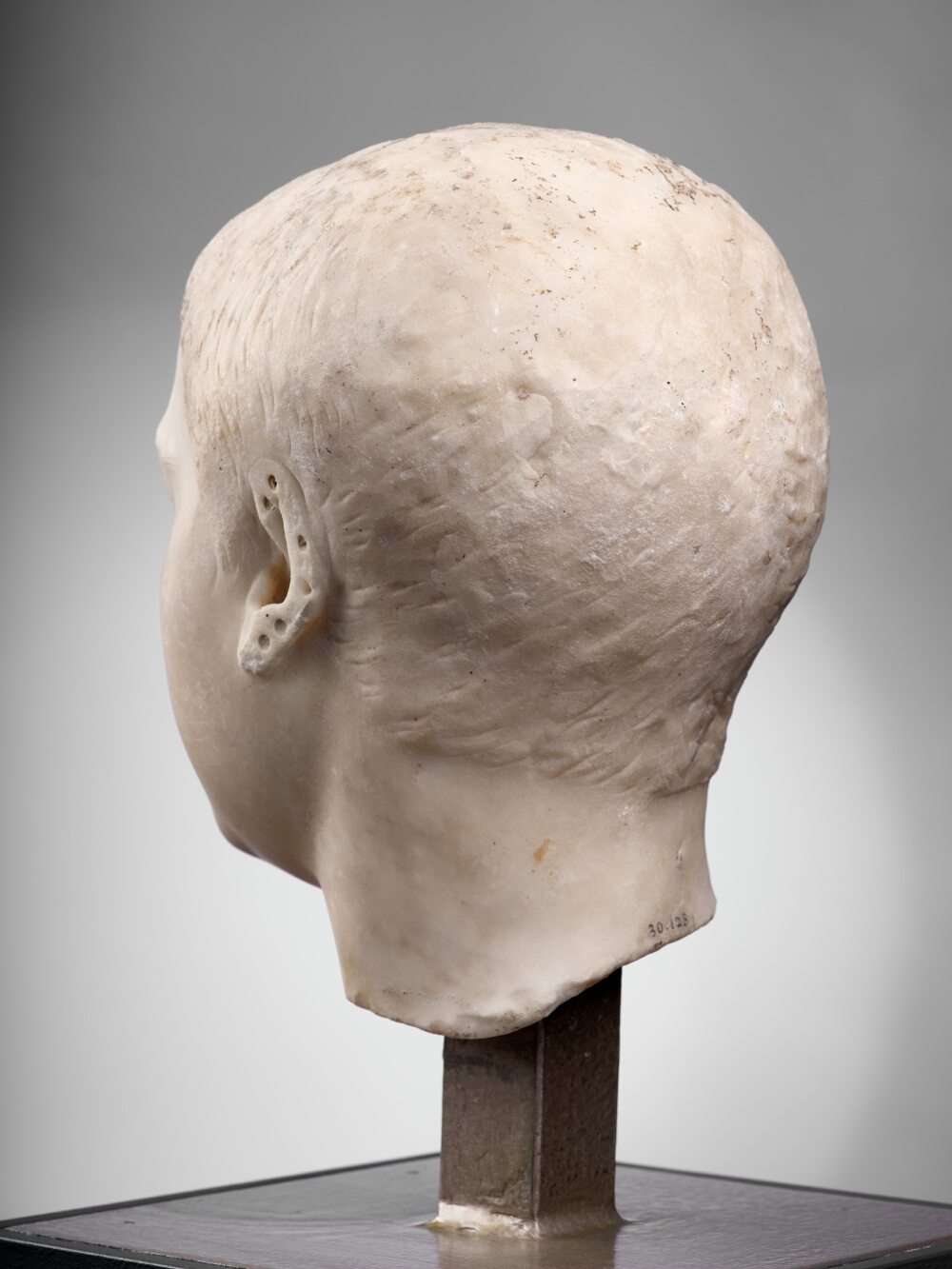
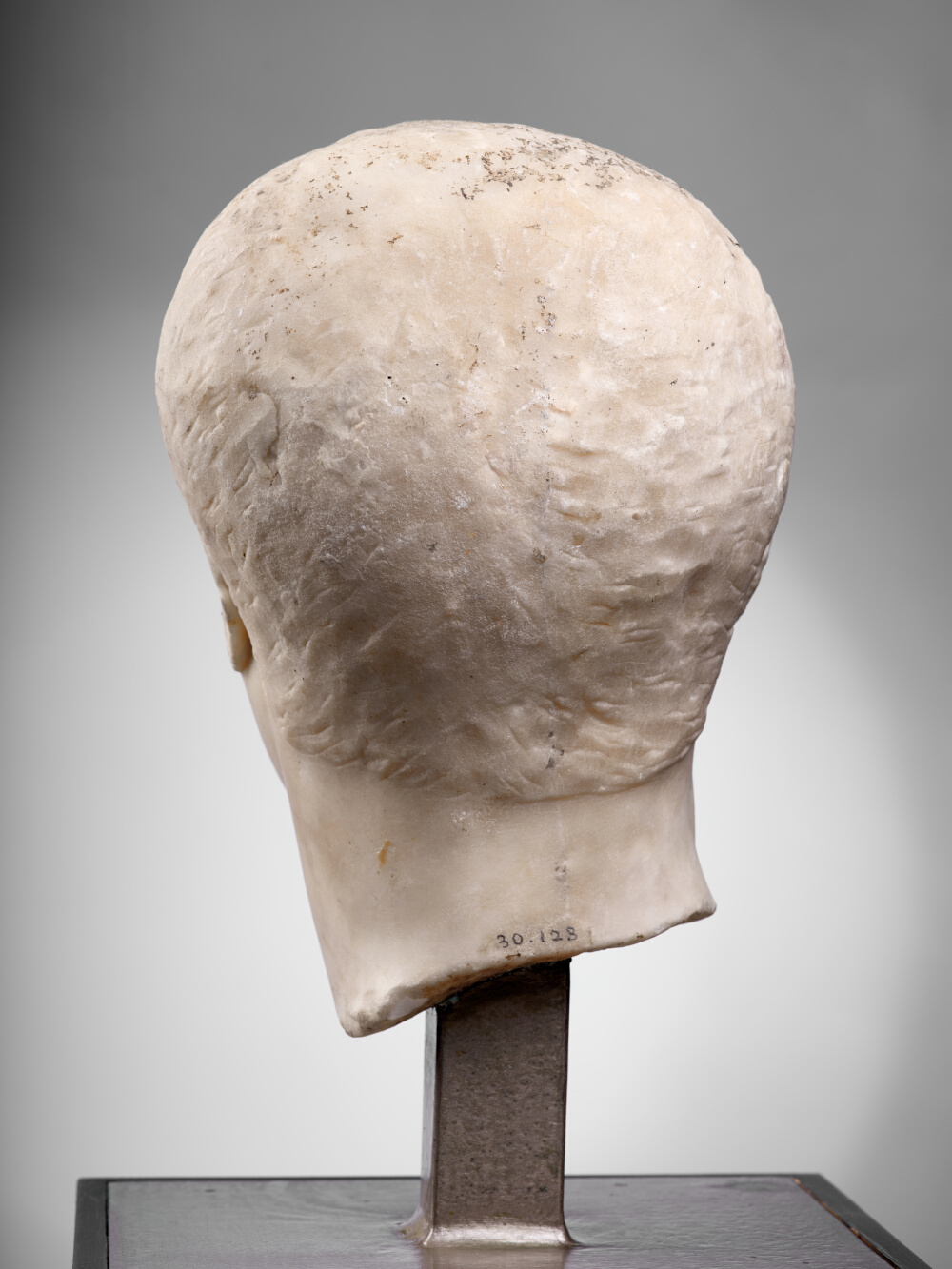
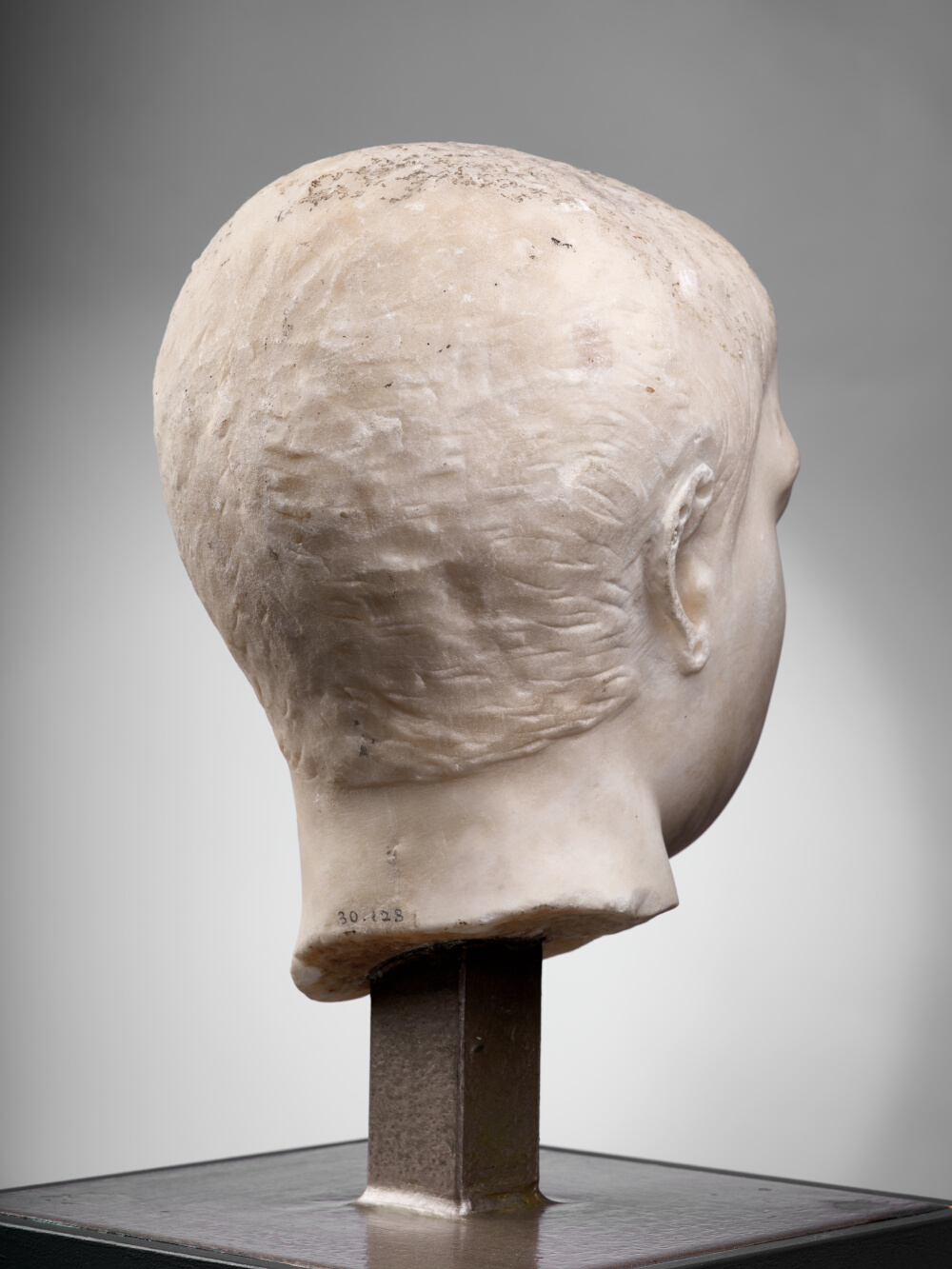
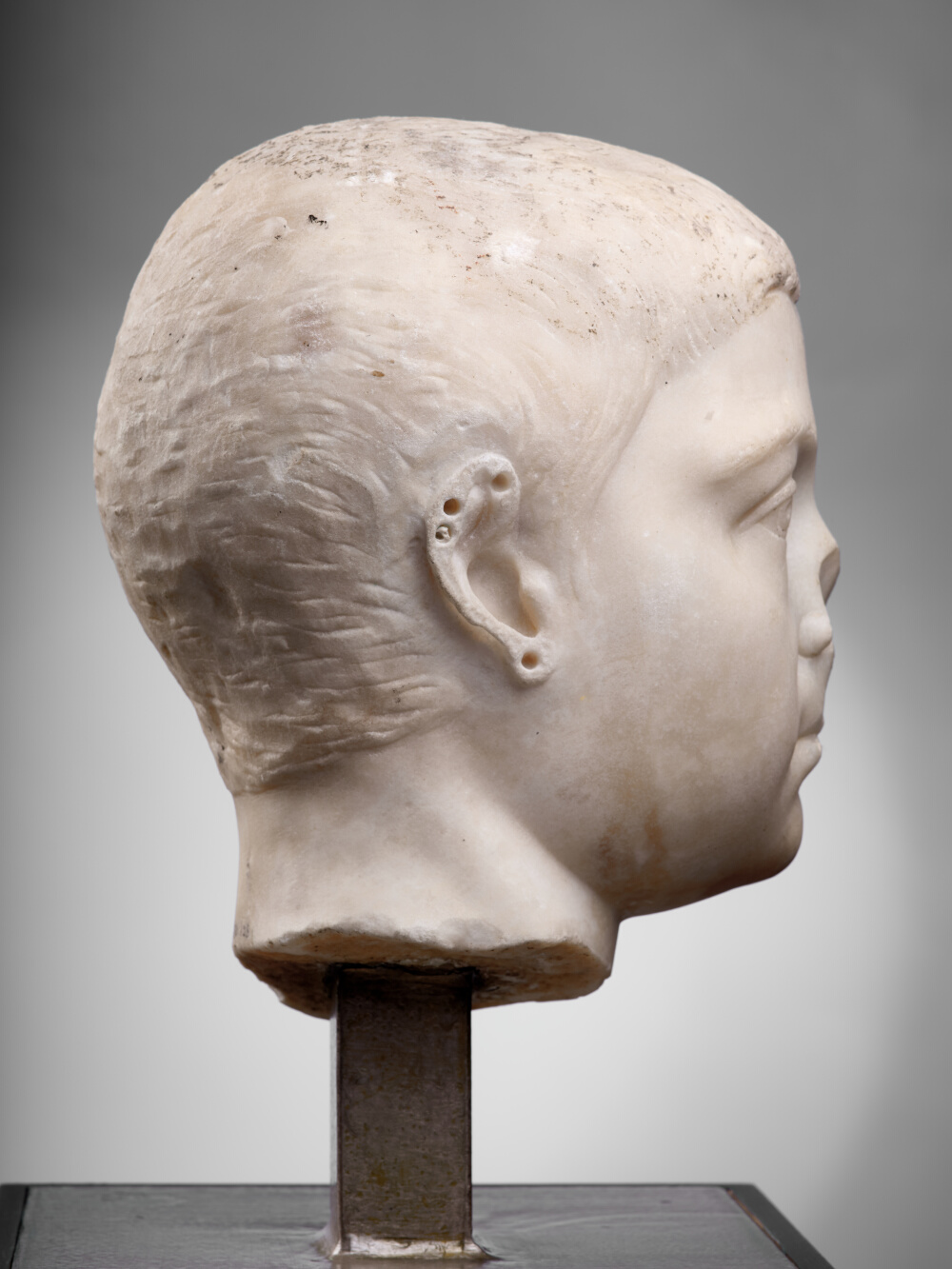
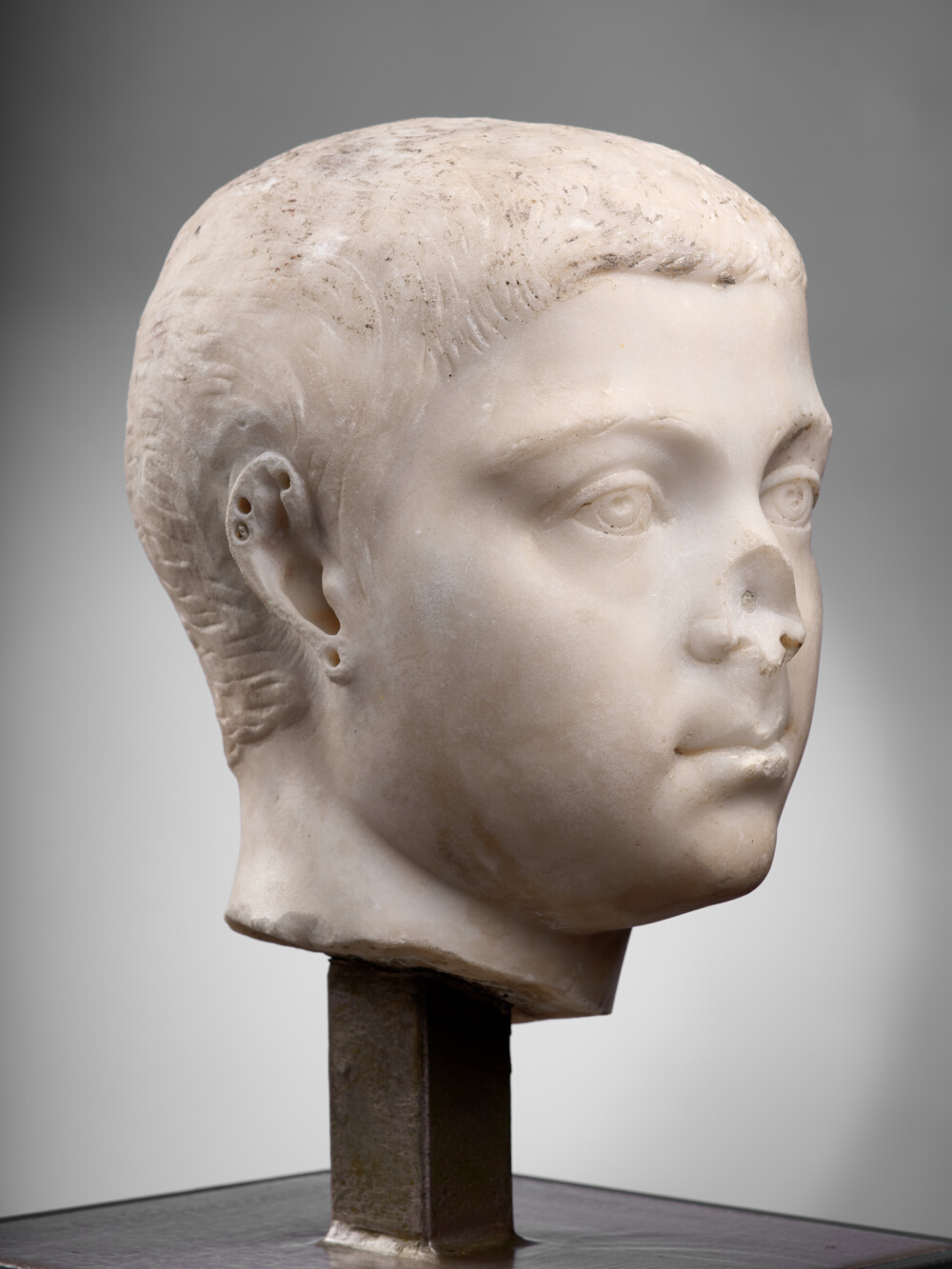
- Biographic data
- 237 - 249
Co-emperor from 247 to 249. Son of Philip the Arab and Otacilia Severa - Date de création
- Between 247 and 249
- Material
- Göktepe marble, district 3 (Turkey)
- Dimensions
- H. 24,5 x l. 17 x P. 19 (cm)
- Inventory number
- Ra 73 h
- Photo credits
- Daniel Martin
This child, with his sweet and dreamy look, is apparently about ten years old. The very short haircut is typical of fashion during the middle of the 3rd century, and the hair is rendered by means of fine incisions, a sculpting technique developed during the reign of Philip the Arab. (244-249).
This statue portrait was believed to be that of Severus Alexandre (222-235) by some, but mainly it is thought to represent Philip the Younger, owing to its strong similarity with the emperor’s profiles on coins K. Fittschen, « Bemerkungen zu den Porträts des 3. Jahrhunderts nach Christus, » Jahrbuch des Deutschen Archäologischen Instituts, 84, 1969, pp. 198–236, en partic. p. 211, fig. 24 ; E. Rosso, L’image de l’empereur en Gaule romaine : portraits et inscriptions (Archéologie et histoire de l’art), Paris, 2006, p. 480-482, fig. 181., on which the small cowlick formed by the fringe at the side of the forehead is sometimes visible. Julius Philippus was elevated to the rank of Augustus in 247, at the tender age of ten. This event is undoubtedly at the origin of the creation of this official portrait, the full cheeks being evidence of his young age. His father Philip the Arab was assassinated in 249 by the Praetorian Guard (soldiers at the disposal of the emperor) or by the soldiers of Decius, his enemy and successor to the throne, and Philip the Younger, who was now twelve, immediately met with the same fate. The two short years during which he was able to exercise his functions as Augustus alongside his father were however sufficient for him to be honoured with a statue, raised in Narbonne by the colony of Béziers, as shown by the extant inscribed plinth E. Rosso, L’image de l’empereur en Gaule romaine : portraits et inscriptions (Archéologie et histoire de l’art), Paris, 2006, 389-390 ; O. Hirschfeld, CIL Corpus inscriptionum latinarum, XIII, Inscriptiones trium Galliarum et Germaniarum latinae, I-1, Inscriptiones Aquitaniae et Lugdunensis, Berlin, 1899, p. no 4227..
P. Capus
Bibliography
- Andreae 1973 B. Andreae, L’Art de l’ancienne Rome (L’Art et les grandes civilisations), Paris. p. 294-295, fig. 126
- Bergmann 1977 M. Bergmann, Studien zum römischen Porträt des 3. Jahrhunderts n. Chr. (Antiquitas), Bonn. p. 36-37, no 3, pl. 5.1-3
- Braemer 1952 F. Braemer, « Les portraits antiques trouvés à Martres-Tolosane, » Bulletin de la Société Nationale des Antiquaires de France, pp. 143–148. p. 143-148, pl. III, fig. 4
- Braemer 1982 F. Braemer, « Le portrait romain, son rôle dans la propagande impériale et dans le maintien de la stabilité du gouvernement de l’Empire, » Wissenschaftliche Zeischrift der Humboldt - Universität zu Berlin, Ges.-Sprachw, 31, 2/3. p. 165, fig. 232
- Cazes et al. 1999 D. Cazes, E. Ugaglia, V. Geneviève, L. Mouysset, J.-C. Arramond, Q. Cazes, Le Musée Saint-Raymond : musée des Antiques de Toulouse, Toulouse-Paris. p. 141
- Du Mège 1835 A. Du Mège, Description du musée des Antiques de Toulouse, Toulouse. p. 124, no 222
- Du Mège 1844 A. Du Mège, Description du musée des Antiques de Toulouse (document manuscrit ). no 381
- Du Mège 1828 A. Du Mège, Notice des monumens antiques et des objets de sculpture moderne conservés dans le musée de Toulouse, Toulouse. p. 72-73, no 138
- Espérandieu 1908 É. Espérandieu, Recueil général des bas-reliefs de la Gaule romaine, 2. Aquitaine, Paris. p. 92, no 1003
- Felletti Maj 1958 B.M. Felletti Maj, Iconografia romana imperiale da Severo Alessandro a M. Aurelio Carino (222-285 d. C.) (Quaderni e guide di archeologia), Rome. p. 83
- Fittschen 1969 K. Fittschen, « Bemerkungen zu den Porträts des 3. Jahrhunderts nach Christus, » Jahrbuch des Deutschen Archäologischen Instituts, 84, pp. 198–236. p. 211, pl. 24
- Joulin 1901 L. Joulin, Les établissements gallo-romains de la plaine de Martres-Tolosane, Paris. p. 123, pl. XXIII, no 296 b
- Rachou 1912 H. Rachou, Catalogue des collections de sculpture et d’épigraphie du musée de Toulouse, Toulouse. no 73 h
- Roschach 1892 E. Roschach, Catalogue des musées archéologiques de la ville de Toulouse : Musée des Augustins, Musée Saint-Raymond, Toulouse. p. 37-38, no 73 h
- Roschach 1865 E. Roschach, Catalogue des antiquités et des objets d’art, Toulouse. no 73 h
- Rosso 2006 E. Rosso, L’image de l’empereur en Gaule romaine : portraits et inscriptions (Archéologie et histoire de l’art), Paris. p. 480-482, no 233
- Wegner, Unger 1979 M. Wegner, R. Unger, « Verzeichnis der Kaiserbildnisse von Antoninus Pius bis Commodus, » Boreas. Münstersche Beiträge zur Archäologie, 2, pp. 87–181. p. 44, 50 pl. 15 a-b
- Wiggers, Wegner 1971 H.B. Wiggers, M. Wegner, Caracalla, Geta Plautilla (Das römische Herrscherbild. 3. Abt), Berlin. p. 199
- C.I.L. 1888 C.I.L., Corpus inscriptionum latinarum, XII, Inscriptiones Galliae Narbonensis Latinae, Berlin. no 4227
- Musée Saint-Raymond 1990 Musée Saint-Raymond, Le cirque romain. Exhibition, Musée Saint-Raymond, Toulouse, 1990, Toulouse. no 14
- Musée Saint-Raymond 1995 Musée Saint-Raymond, Le regard de Rome : portraits romains des musées de Mérida, Toulouse et Tarragona. Exhibition, Mérida, Museo nacional de arte romano ; Toulouse, Musée Saint-Raymond ; Tarragone, Museu nacional arqueològic de Tarragona, 1995, Toulouse. p. 44, no 6
To cite this notice
Capus P., "Portrait of Philip the Younger", in The sculptures of the roman villa of Chiragan, Toulouse, 2019, online <https://villachiragan.saintraymond.toulouse.fr/en/ark:/87276/a_ra_73_h>.